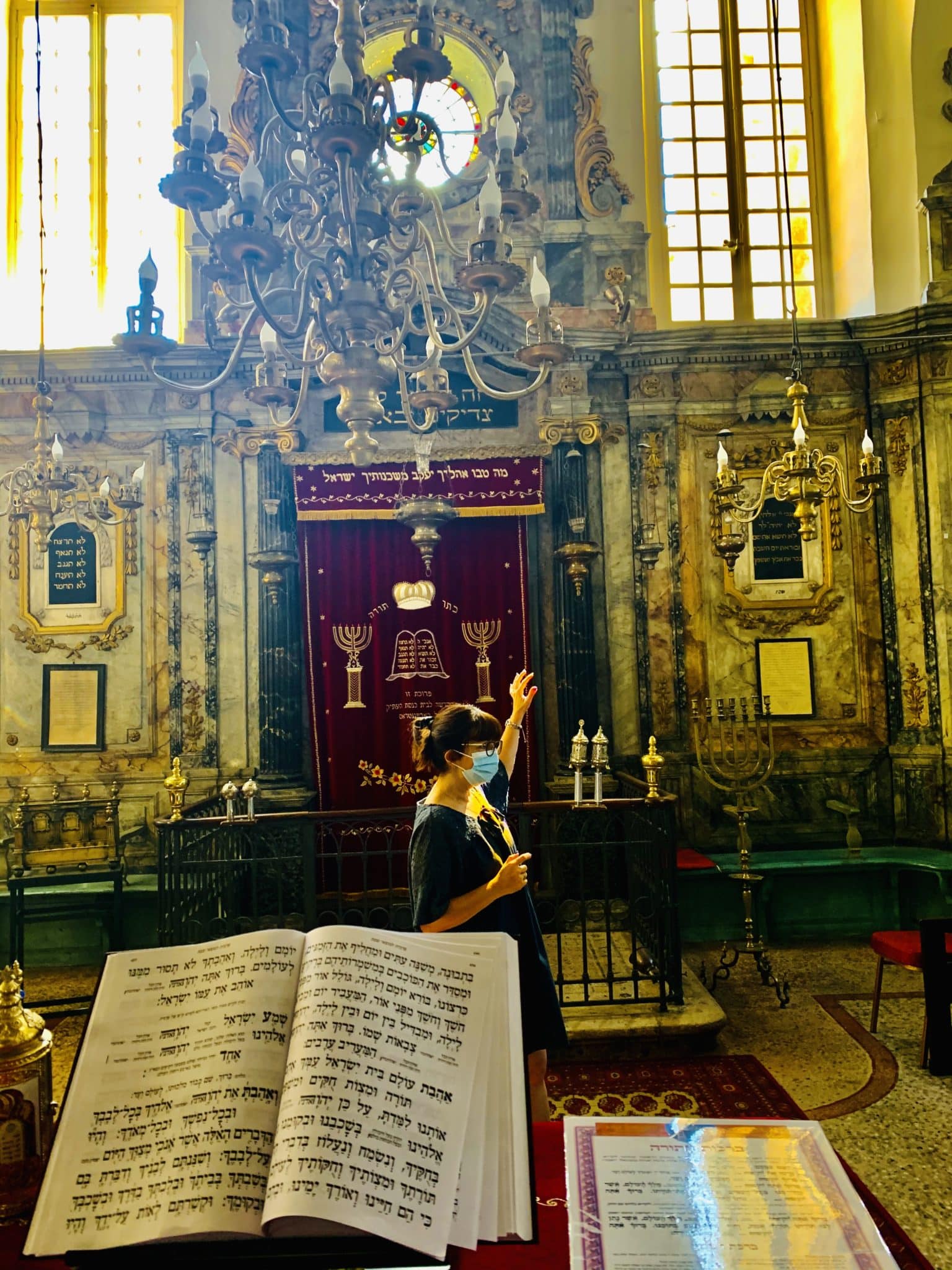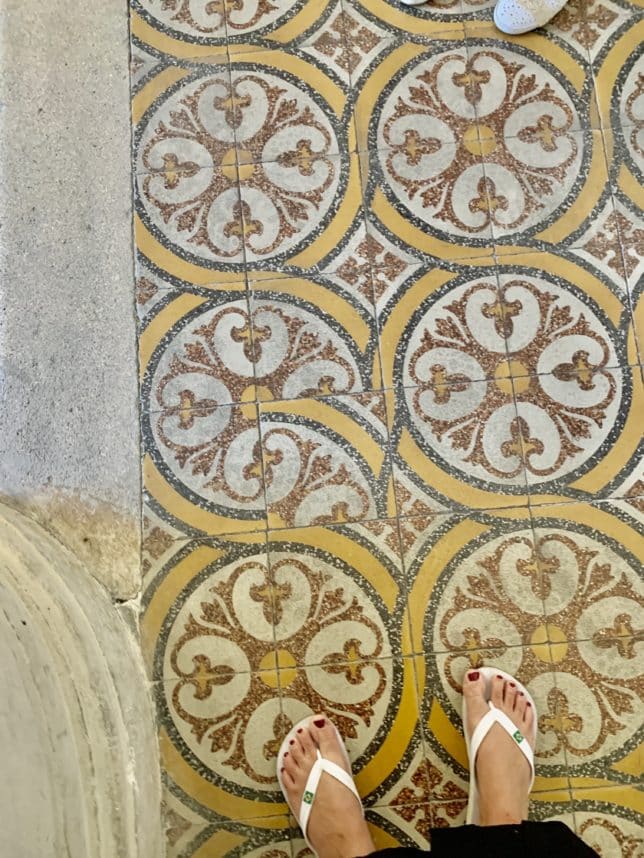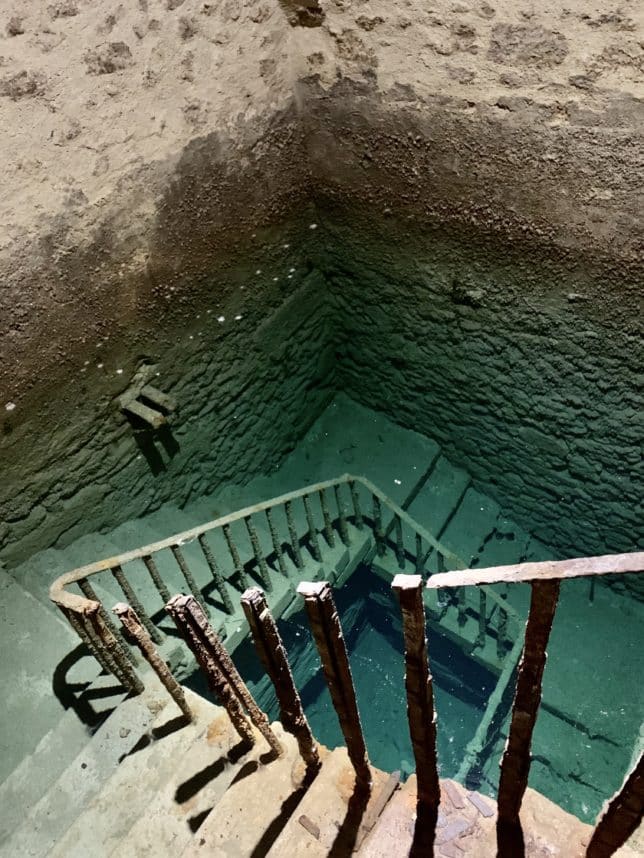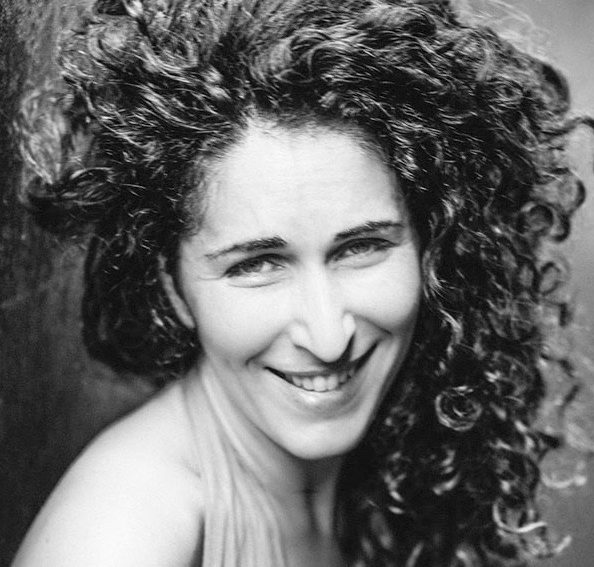
It’s only because I got lost, and it’s only because I’m an inexperienced driver who white-knuckles the wheel when I drive stick-shift anywhere that’s not an open country road, it’s only due to all that, that I even discovered there’s a synagogue here to begin with.
By “here” I mean Carpentras, population 28,699 people. It’s the neighboring town to my Bedoin, population 3.087.
I had driven down to Carpentras, a week ago, and was circling nervously, trying to find my way home, when I bumped smack dab into a sign that said “ Synagogue”
Huh, I thought. I would never have thought of this town as having one.
When I got home, I went on google and discovered, not only does Carptentras have a Jewish community, it is home to the most ancient synangogue in all of France.
Built in the 14th century, with special permission by the Bishop of Avignon.
I’ve never been much of an institutionalized religion person, even though I believe passionately in the power of prayer and in G-d.
My favorite sanctuary is G-d’s wide open sky; I like praying while looking up at pine tree’s, or listening to waves crash, or with my bare toes in sand.
But if I discover that I *happen* to be living twenty minutes away from the most ancient synagogue of all of France, you bet your life I’m going to go.
So I made an appointment.
My friend Kelly and I showed up at 11:00 am and Pascale, our lovely guide, greeted us at the big wooden door.
The air was cool inside, a relief from the already oppressive heat from outside.
Pascale led us to the sanctuary and I immediately felt a sense of comfort.
Look at that Torah, look at that ark, look at these wooden benches; it all reminded me of Mishkon Tephillo, synagogue of my youth.
With some differences.
The Carpentras shul is both Sephardic and Ashkenazik and was built under the permission of the Bishop of Avignon.
But they built it too tall—it was forbidden for any synagogue to be as tall or taller than the Cathedral. So the Bishop forced them to knock it down and make it smaller. They complied.
See this staircase, this beautiful marble staircase leading into the building? Well, the Bishop thought that was too pretty; nothing Jewish was allowed be *that* pretty and also visible to anyone walking down the street. So he ordered them hide it, and make it an indoor staircase only. And they complied.
See that stained glass in the shape of a crucifix?
That is there because the Bishop insisted that that a crucifix be built there. Yup, you read that right. A crucifix, in a synagogue.
Because a crufixic was the only thing that was acceptable for passerby’s in Carpentras to see, the Bishop decided.
And the Jews accepted.
Of course they did; they knew that was the only way they were going to get their synagogue built.

See these beautiful yellow floor tiles? See if you can find the flaw. There’s one tile here, right near my flip-flopped feet, that is “wrong”. Where the tile-pattern is incorrect.
This wrong tile was constructed this way on purpose.
The reason? “To remind us that only G-d is perfect” Pascale replied. “ And that human beings are flawed, so we embrace the flaw. It’s an ancient Jewish thought.”
“I was absent the day they taught that at Hebrew School.” I whispered to Kelly.
See this armchair above the bima? “That’s because this is where circumcisions take place, and Prophet Elijah is said to watch over and protect the babies during circumcision. But when Prophet Elijah comes back, he might be very tired. So the armchair is for him to rest in.”
Well, that was about the sweetest, most endearing thing ever. Kelly and I exchanged moved glances.
What about in the Nazi times? The synagogue was never occupied or burned.
But there was this one woman, Blanche Mose. She defended this synagogue like a lioness.
And one day this Nazi knocked on the door and asked if he could come in.
She told him no, and shut the door in his face.
The town freaked out. Blanche, they told her. That was a BAD DESICION. If they burn down the synagogue all of Carpentras will burn too! Next time you better let them in.
But Blanche Mose was a force to be reckoned with.
So she took all the holy objects, the Torah, the scrolls, the kiddish cups, the ancient relics—and put them in two coffins, and put those two coffins in the center of the sanctuary
When the Nazi’s knocked again, she told them two people in the community had died and were about to be buried.
The Nazi’s ignored the coffins, not realizing that it’s totally forbidden in the Jewish tradition to have dead bodies in a sanctuary, and that no Jew would ever do that.
And then something amazing happened: The Christian neighbors of Carpentras filed in, one by one, into the synagogue, and took all the gorgeous chandeliers down.
“That’s mine, that actually belongs to my family ” they said.
The Nazi’s approved.
These Christian neighbors kept the chandeliers safe, during the entirety of the war years, in an exquisite act of solidarity with their Jewish neighbors and in defiance of the Nazi’s.
And when the war was over? Those beautiful allies returned each and every chandelier to the synagogue.
I was getting teary.
I wiped my eyes and Pascale led us down to the stone cellar, and showed us things.
This is the courtyard where they butchered the kosher meat.
This is the synagogue boulangerie, and here is a wood-burning stove where they made matzoh. They had their own boulangerie—two, in fact, for the whole community, since there was no way to know what had touched the bread in the normal boulangeries.
Finally we came to the mikvah, the ritual holy bath that religious women bath in once a month after their periods, and before their weddings.

And I don’t know how to say this, except–there was this light around it. I am not sure how that is even possible, since there were no windows and everything was built of stone—but I am telling you it had light around it.
In accordance to the mikvah laws, the water consisted of rain water and imported water from the river at Isle de la Sorgue, and it glowed. It radiated purity, serenity and holiness.
I’ve never been in a mikvah myself—but I went with my sister before she got married. I remember her disrobing, the mikvah lady checking for stray hairs, and sending her down the seven steps, seven for each day of the week. And she dunked herself under the water and I sang to her and she wept, as she lay her head back in the water and her hair floated out around her.
I imagined all the women who went to this mikvah, how they must of felt, how the water felt. I wondered if they wept in the water, and had their sisters sing to them.
I wondered if they felt in there the way I feel under the pine trees, underneath the open sky, or listening to waves with my feet in the earth, or how I felt at this very second, discovering this ancient holy place that had been directly under my nose this entire time.























 More news and opinions than at a Shabbat dinner, right in your inbox.
More news and opinions than at a Shabbat dinner, right in your inbox.